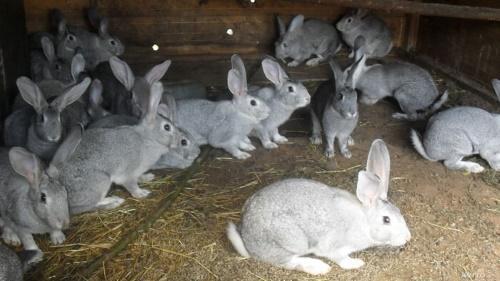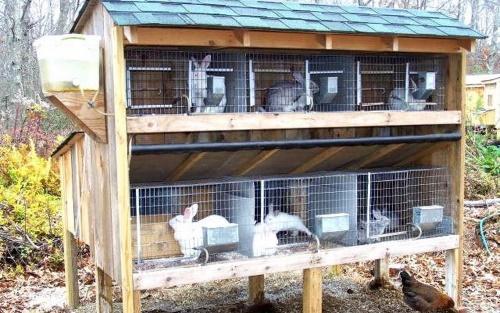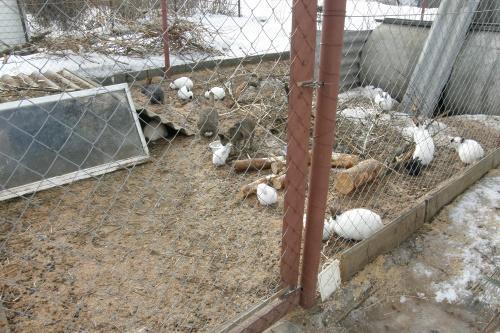How to keep rabbits: cage and free breeding
 Rabbits are a profitable business. They eat mostly pasture, develop rapidly and multiply, and nutritionists consider meat to be one of the best. However, if you decide to start breeding them, it is worth considering the other side of the issue. Eared pets require a lot of attention, they need space and air, cleanliness and comfort. They do not tolerate heat and cold well and often die. In order not to regret your decision, it is important to decide how to keep rabbits even before purchasing animals. A well thought out and equipped "place of residence" will not only save them from diseases, but also facilitate their care.
Rabbits are a profitable business. They eat mostly pasture, develop rapidly and multiply, and nutritionists consider meat to be one of the best. However, if you decide to start breeding them, it is worth considering the other side of the issue. Eared pets require a lot of attention, they need space and air, cleanliness and comfort. They do not tolerate heat and cold well and often die. In order not to regret your decision, it is important to decide how to keep rabbits even before purchasing animals. A well thought out and equipped "place of residence" will not only save them from diseases, but also facilitate their care.
Rabbit keeping methods
So, you can breed rabbits in places specially equipped for this purpose, namely:
- in cells;
- on a free content.
Each method has its own advantages and disadvantages that must be considered when planning rabbit farming. Let's take a closer look at them.
How to keep rabbits in cages?

Depending on the breed, the size of the cages can vary up or down. On average, one individual needs a space up to 1 m in length and about 0.5 m in height and depth.
Cellular content, in turn, can be of two types:
- Stationary. The cages are kept outdoors or indoors all year round. In the first case, they must be insulated.
- Portable or combined. In summer, the cells are on the street, and with the onset of cold weather they are brought into the room.
The advantage of cage keeping is the ability to fully control the life of pets. Easy selection for breeding and rational use of feed. In addition, in case of illness, the risk of an epidemic is reduced as the rabbits are separated.
Of the disadvantages of this method, it is worth noting the costs of arranging the cells and caring for them more time.
Free keeping of rabbits
In recent years, it has become more and more popular to breed animals "free", not limited by the walls of the cage. No matter how big it is, rabbits have more room for movement in the wild. Of course, the fence is still provided, but the area is many times larger. This creates conditions as close as possible to natural conditions. Rabbits grow stronger and calmer. It is easier to take care of them, because you can feed and water everyone at once, and often you will not need to clean up.
Free content can be of three types:
- Aviaries. A perimeter fenced area with a floor concreted or covered with a grill (on the sand). They can be seasonal (only for the summer) or year-round, but then there must be shelters. There is also a practice of attaching aviaries to a barn in which animals can take refuge.

- Pits. They will significantly save space, because only 4 sq. m for hundreds of heads.The walls of the pits are fenced with slate, but in one they leave the "entrance to the hole" - here the rabbits will dig their houses further. The bottom is covered with sand and a net is placed on top. A canopy is installed over the pits.

- Grazing. By and large, these are the same aviaries, but more spacious. Here, the rabbits get most of their diet by themselves, feeding on grass.

However, it should be borne in mind that with free breeding it will be difficult to avoid mass diseases. Also, control over the “breed purity” is lost and after a couple of years the animals may degenerate.